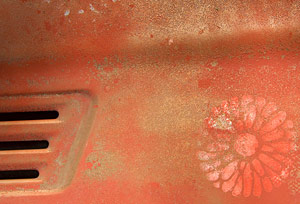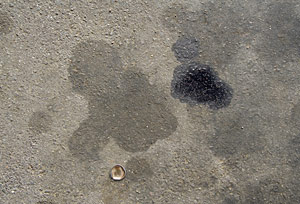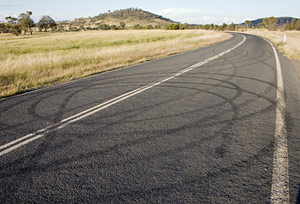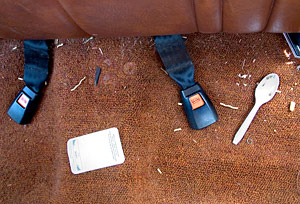___________________________________________________________________________________________________
_
about | exhibitions | artists | venues | workspaces
___________________________________________________________________________________________________
_
Excavating Georgia | Ursula Frederick & Katie Hayne (Australia)
The impetus for this project was a specific incident - the theft of a car and its subsequent recovery. But it is an event that resonates on a global scale and which is situated in a wider web of associations and themes with enduring currency; some of which include consumption, criminality, identity and ruin.
The creative and experimental methodologies of visual artists have the potential to contribute new ideas and new ways of working in areas of research interested in the human condition. This artwork explores possibilities for approaching a material record in visual and other sensorial ways to contemplate who we are and how we understand our world. It draws upon methods and metaphors prevalent to archaeological and visual arts practice and proposes thinking with and without material evidence.
The work of excavation involves a process of questioning. It interrogates the nature and formation of material remains as well as revealing the kinds of associations and assumptions that material evidence allows us to challenge. This artwork is intended, similarly, to explore different modes of representation as a way of interpreting materiality and its potential for communicating meaning.
The first stage of this work involved a process of working with an absence of tangible material. We drew from our imaginations and memory. What was in the car before it was taken? What images and assumptions would the people who stole it have about the car’s owner and occupants? Would the material inside the car form an accurate representation? This part of the project was informed by other ephemeral encounters such as phone conversations and meetings with police, security guards, car dealers and friends. The second stage involved dealing with the presence of the car once again and all the living people and pets that it had carried. How the car itself and the material within it might contribute to our understandings of the event. We recorded the interior of the car and noted anything that might have been changed. Despite having the advantage of knowing the car well prior to its theft, there were many surprises. Imagination and memory still played a part in our thinking. Recalling which friends had borrowed the car and considering what might be theirs. Did the ‘thieves’ break the aerial or was it already broken? Why did they put the back seats down and then up again? Why did they take what they did and why did they leave other things behind? And what do all of these things tell us about our value-creation processes?
This artist’s book re-presents in a visual format the process of ‘Excavating Georgia’ in a way that allows the reader to go on their own journey of discovery through the material whilst experiencing the possibilities of combining artistic and archaeological methods towards understanding our relationships to material culture and the broader context in which meanings are created.
-Ursula Frederick & Katie Hayne, June 2008
Biographies
Ursula Frederick is an archaeologist and artist. She is currently a PhD candidate at the School of Art, The Australian National University. Katie Hayne is currently a digital media developer at the Research School of Humanities, The Australian National University. Katie and Ursula have worked on several collaborative art projects, including short films.




_
___________________________________________________________________________________________________
Ábhar agus Meon, Sixth World Archaeological Congress, School of Archaeology, University College Dublin, Dublin 4, Ireland
(@) http://www.ucd.ie/wac-6 (@) http://www.amexhibition.com (e) info(at)amexhibition.com
(t) +353 (0)87 654 8301 (f) + 353 (0)1 716 1184
Designed by iArchitectures (2008).





